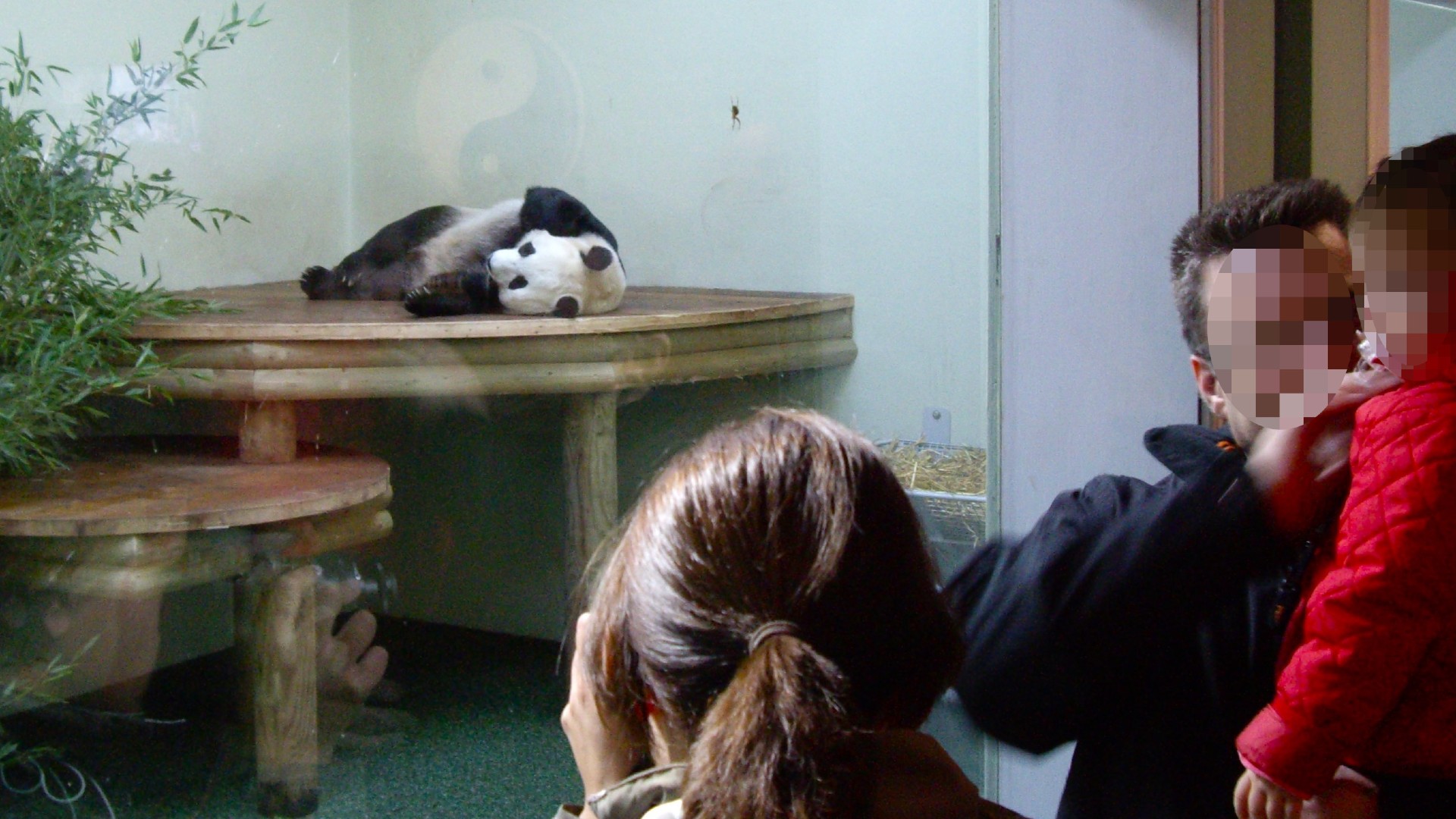Keeping of giant pandas at Edinburgh Zoo finally comes to an end
The two pandas are returning to China after 12 years in Scotland, with today (Thursday 30th November) the last day the pandas will be on display before preparing to fly home.

A giant panda at Edinburgh Zoo (c) Born Free
The two pandas, female Tian Tian and male Yang Guang, who arrived at Edinburgh Zoo in 2011 as part of a 10-year loan agreement, are due to return to China in the first week of December. Their time at Edinburgh Zoo had been temporarily extended as a result of the Covid-19 pandemic.
Over the course of their stay, the zoo has reportedly paid China an annual ‘rental’ fee of $1 million USD (£790,000) for the two giant pandas. In addition, food and healthcare have cost an estimated £35,000 per month, including roughly £70,000 a year to import bamboo from the Netherlands to feed the animals. A further quarter of a million pounds was spent constructing their enclosure prior to their arrival.
All-in, the two pandas have cost the zoo in excess of £1 million per year during their time in Scotland. When they arrived, the Guardian estimated it would require an additional 1,000 visitors to the zoo per week, for ten years just to break even.

(c) Born Free
Following their arrival in 2011, a spokesperson for VisitScotland described the animals as a ‘fantastic asset’, with the hope it would encourage increased visitor numbers to the zoo and the wider area. Zoos may prefer to describe such animals as ‘ambassadors’ for their species. Either way, it is difficult to describe Tian Tian and Yang Guang or any other ‘ambassador’ animal in a zoo as anything more than a potential commercial asset. Their presence within the zoo, first and foremost, has been to generate income from people wishing to see them. The animals’ roles in promoting education, conservation and research are somewhat difficult to quantify and even harder to justify.
Not long after their arrival, Edinburgh Zoo launched a ‘panda keeper’ visitor experience package charging a £1,000 fee, however it was withdrawn only a few months later following criticism and a lack of sales. In addition, Tian Tian underwent seven failed artificial insemination procedures at Edinburgh Zoo in a thinly veiled attempt to produce cubs and boost ticket sales. Even rumours of potential cubs are believed to have resulted in increased visitor numbers. However, despite semen being flown in from various male pandas and numerous expensive and invasive procedures, all attempts failed to produce the cub that zoo management so desired.
Meanwhile, in the time that Tian Tian and Yang Guang were at Edinburgh Zoo, the conservation status of giant pandas in the wild improved and was upgraded from ‘Endangered’ to ‘Vulnerable’ with an increasing population trend. This is thanks to the work conducted within the species’ natural range in China and serves as a clear reminder that the most productive and successful conservation projects are based in the species’ native, natural range. Edinburgh Zoo states it has made a ‘significant contribution’ to research relating to giant panda fertility; however, it is difficult to rationalise how such research has not, or could not have been, conducted as part of the giant panda’s breed-for-release programme in China, given the reported successes of the project.
Scottish Government documents from 2022, revealed that once back in China, Tian Tian is set to retire and will no longer be exhibited as she is ‘not a people panda’, raising questions about her past welfare at Edinburgh Zoo and the ethics of being displayed in front of thousands of people for 12 years. Concerns remain for the fate of Yang Guang, who developed testicular tumours and was subsequently castrated in 2018. Without a role to play in the breeding programme, the same Government documents suggest he will be put back on public display when he returns to China.
Following the departure of the giant pandas from Edinburgh, records show that 29 giant pandas will remain across nine European zoos, with only one birth occurring in the last 12 months. Overall, the number of giant pandas born in Western zoos and returned to China has been tiny, with estimates suggesting as few as seven.
It seems highly likely that if the giant pandas housed across Europe had remained in China, they would have made a greater conservation contribution to the conservation of their species. Instead, they have been used as commercial ‘assets’ by their hosts, while failing to generate the financial outcomes zoos had hoped for. Meanwhile the contribution of these captive zoo animals to the conservation of their species in the wild is highly questionable. It also shines a bright and critical spotlight on the wider use of ‘ambassador’ animals by zoos.
The UK will once again be giant panda free. We sincerely hope that these remarkable and unique animals continue to recover, where they belong: in the wild.
